The Great Ocean Race - The Power of Sport for Sustainability
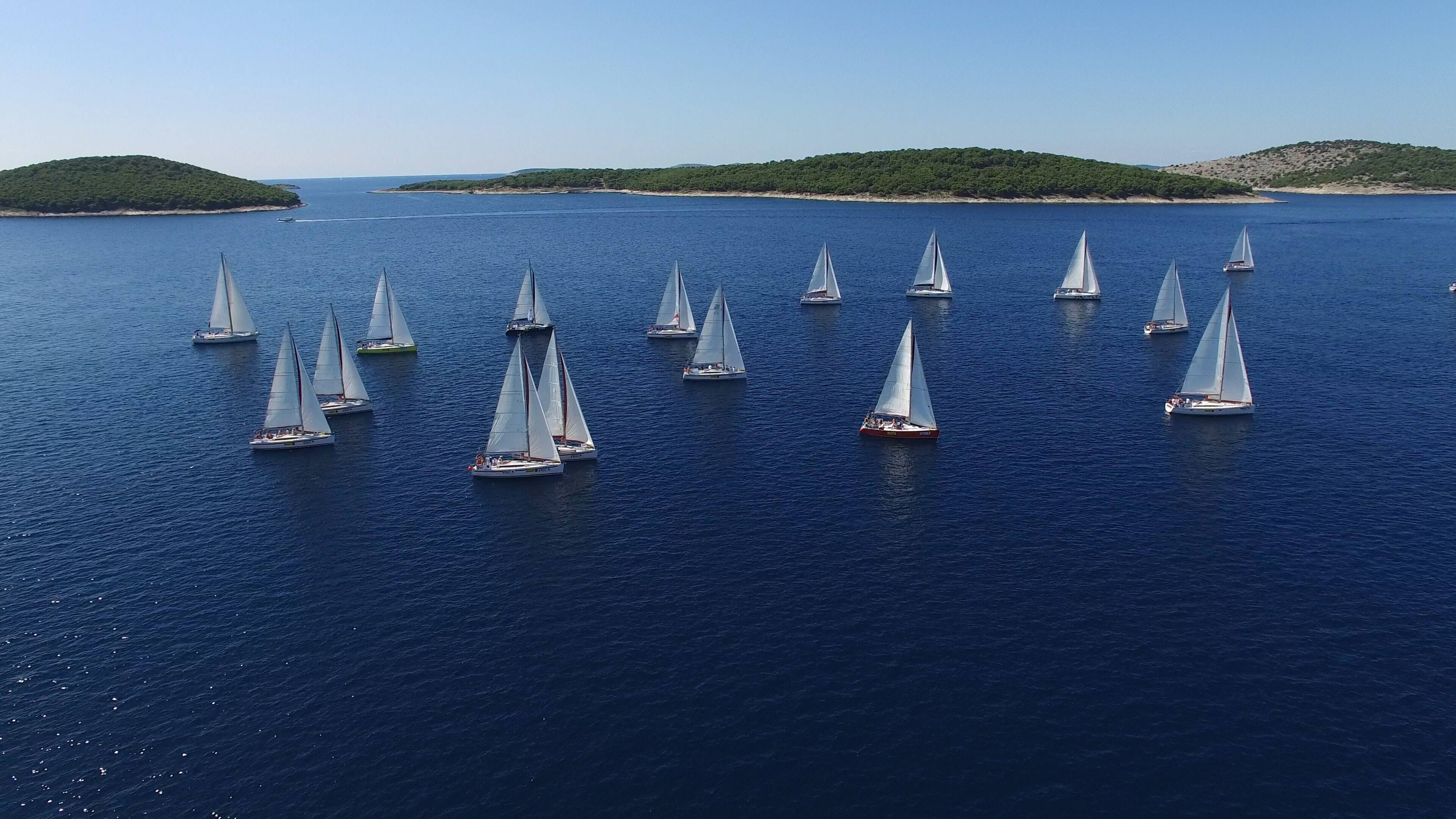
When asked by audience members why the Ocean Race, a worldwide sailing event, even exists at all, Alexandra Rickham, Head of Sustainability at World Sailing, replied
"...Athletes are amongst the most influential people in the world. People listen to athletes. Sport is a powerful platform for sustainability, and we are using our platform to raise awareness for the Ocean."
I was blown away by this simple concept. While Sailing was actually the first sport in the world to create a sustainability plan, I had never thought that deeply about the fact that if you enjoy recreational or competitive sailing, you must have a deep connection with water. And by nature of being on the water, the sport had the ability to not only drive awareness, but become stewards for future protection.
I recently had the opportunity to attend The Ocean Race stopover in Aarhus, Denmark thanks to the sponsorship of 11th hour Racing and UNLEASH as part of the Ocean Youth Summit. The Ocean Race is the annual world sailing race that runs for six months with nine global stopovers.
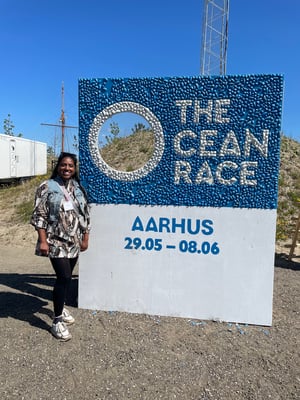
You may be thinking…how random? A stopover for a sailing race? Literally what are you talking about? Well, long story short, I attended the UNLEASH regional innovation lab in Nuuk, Greenland in August 2022, where I got to meet so many incredible people from all across the Arctic and Nordic. My team, the Arctic Food Cooperative, placed in the finalists and as such we were invited to attend on behalf of UNLEASH who had received an invite from 11th Hour Racing in an effort to have youth engagement.
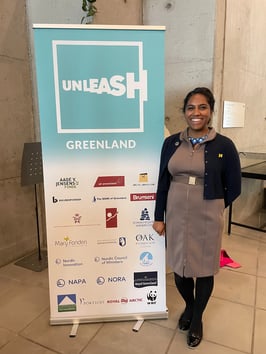
Attending the UNLEASH Regional Innovation Lab in Greenland in August 2022
The Aarhaus stopover was specifically dedicated to sustainability where they built a “sustainability island” which was a collection of booths and experiences focused on the environment. It provided an interactive way for people of all ages to learn more about sustainability and meet people where they were at in their sustainability journey.
During the four day youth summit immersive, I foraged for seaweed, cooked mussels, considered what a sustainable food system would look like, learned new human centered design methodologies and met inspiring youth from all over the world. There are so many people and experiences to highlight.
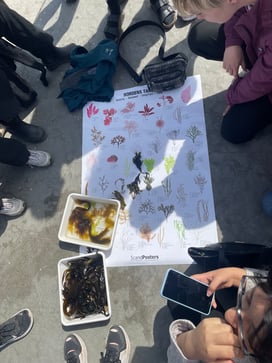
Seaweed foraging and identification
When thinking about how to apply these learnings to being business leaders, here are the four key takeaways I had from the experience:
Consumption Doesn’t Have to be Inherently Evil
The part that impressed me immensely while in Denmark was the intentionality in the design of the programming and the experience. While sailing is inherently environmentally focused by nature of being on the water, the opportunity to design engagement with the sustainability aspect was critical. There was a booth from Volvo about their new electric vehicles, art exhibits made from sustainable materials, and all drinks at the event were served in reusable cups. At dinner, there were herb plants on the tables where you could cut your own herbs to be added to your dish. While having an event like this certainly has a footprint, the opportunity to make sustainability a core principle is critical. When we can make sustainability beyond words, and something that truly arouses all of our senses, it becomes part of the fabric of behavior.
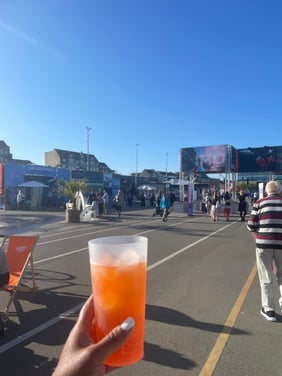
All drinks were served in reusable containers
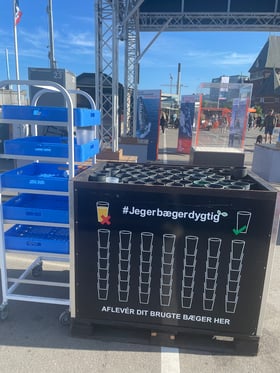
Cup reuse deposit station
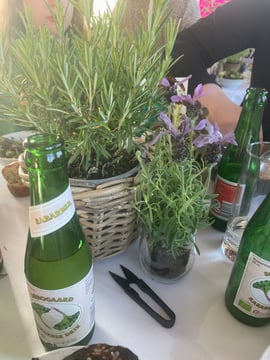
Herbs available to add to dishes
Sport in Combination with Intentionality is a Powerful Tool
We love an underdog story. We love athletes because we can see ourselves in them. We see the dedication, the hardwork and the rewards and we think (even if we are not going to be a professional athlete), “this could be me”. Sustainability is somewhat similar; it requires intentional effort, design, dedication and commitment to be at the top of the game. For example, The Ocean Race has created an industry roadmap leveraging pre-competitive collaboration to cut greenhouse gas emissions in their boat design by 50% by 2030. This means intentionality in material selection, waste and end of life (to just name a few!). As the boats were sailing, they were also collecting water samples and providing data to advance scientific research. In fact, water samples taken from the world’s most remote area, Point Nemo, which is 2,688 km from any land mass, were detected containing microplastics. I love that Sailing seems to be using a combination of all tactics to drive a more sustainable outcome. It begs the question, are there ways we can leverage existing infrastructure of day-to-day tasks to advance more sustainable outcomes no matter the product, industry or experience we are creating?
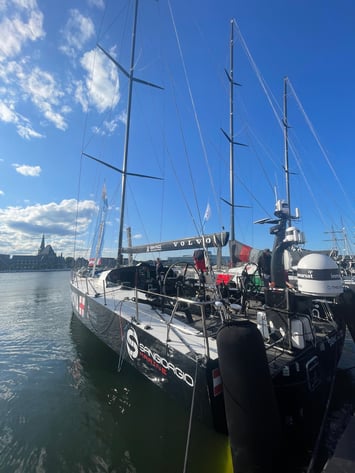
Sailing Race Boat
Youth Engagement is Critical
One of the greatest things about the conference was having the opportunity to hear about youth engagement from across the world. Although I am still considered young ( :) ), it was inspiring to hear from people 10-15 years my junior about the work they are doing. For example, RISE Global Winner Allison Jazmin Dominguez Fernandez created a low cost and easy way to build a water heating system that leverages heat transfer through darkly colored material. In addition, all of the programming during the youth summit was designed and led by young leaders in the space. And, not to mention they were all doing it on their own time and without pay.
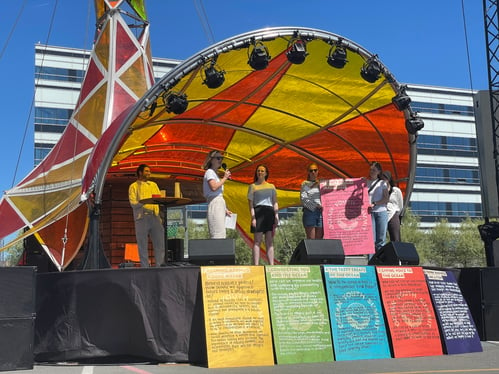
Youth leaders presenting on findings from the week
There is so much passion in the space to unlock and we need to give opportunity to rising leaders. That means lowering barriers of entry to be in the sustainability world. Despite the boom in sustainability jobs, it is still difficult to land a sustainability focused career due to hiring practices and greenwashing. But, as witnessed, creating space for intergenerational connection and multi-directional learning provides the opportunity to drive greater innovation and create a pipeline of talent.
Looking Forward
There is nothing as divisive as politics, but there is also nothing as universal as competition. When you are sailing on the open water, there is an inherent connection to the open water; in fact it is what essentially fuels the boats and provides opportunity for professional sailors, enthusiasts or simply people who enjoy being on a boat (like myself). When you grow up around water and oceans, they become part of your existence and being.
As we head towards the World Cup and the Olympics in North America, how might we amplify and embody the power of sport as a platform for sustainability to serve as a leader and as an example? In the year over year competitions we see (NBA Finals, World Series, Super Bowl, college sports), how might we reimagine the platform as a way to empower voices from traditional marginalized communities, or for those who do not have voices (like the ocean!) to provide an experience that is truly just and sustainable? Whether the official committees want to do it or not, we as business leaders certainly have the responsibility to.
About the Author

Supreya Kesavan is pursuing a Master of Business Administration and Master of Science in Environmental Science and Sustainability with a focus in environmental justice issues at the University of Michigan through the Erb Institute. Feel free to connect with her on Linkedin.



-Aug-09-2024-03-37-40-2466-PM.jpg?width=352&name=worms-eyeview-of-green-trees-957024%20(1)-Aug-09-2024-03-37-40-2466-PM.jpg)
